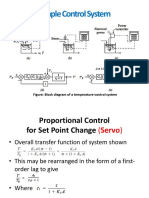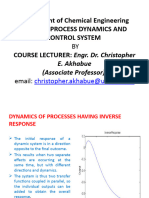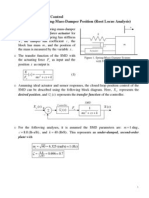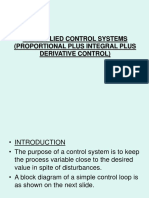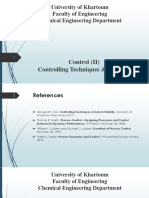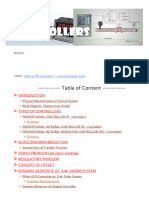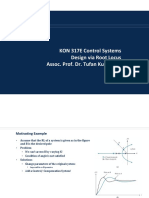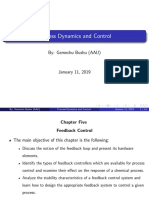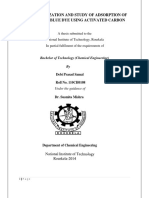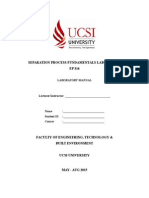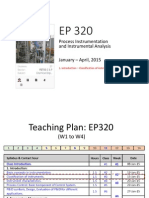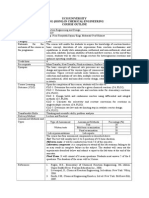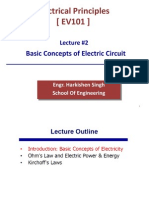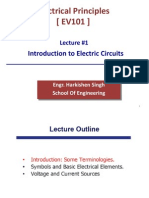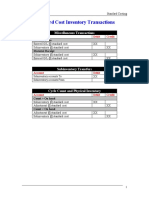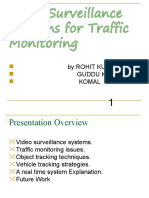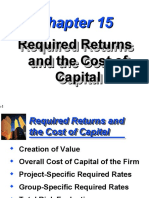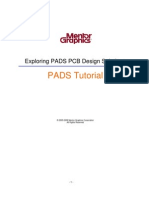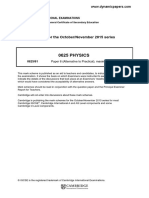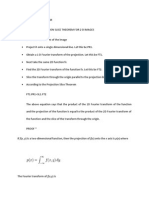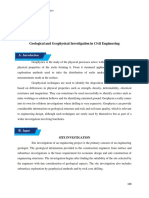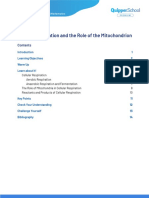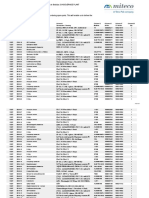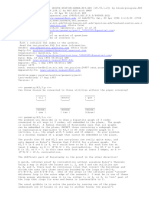EP 314:
Process Dynamics and Controls
(May Aug, 2015)
Mohd Fauzi bin Zanil
�EP 314:
Process Dynamics and Controls
(May Aug, 2015)
Mohd Fauzi bin Zanil
3f. Closed Loop System- Closed loop System Analysis
�No
13
14
15
16
17
18
19
20
21
22
23
24
25
26
27
28
29
Topic
No class
3d and e. Closed Loop System: Z-N & C-C controller design
method
Midterm (20%)
3f. Closed Loop System: Closed loop System Analysis
Tutorial 3
ShortQuiz3
4a. Frequency Response: Modelling in Frequency Domain
4b. Frequency Response: Bode diagram
4c. Frequency Response: PID controller design
Tutorial 4
ShortQuiz4
5a. Stability & System Analysis: Introduction
5b. Stability & System Analysis: Routh's test
5b. Stability & System Analysis: Controller Design
Test (10%)
5c. Stability & System Analysis: Criteria of Good Control
Tutorial 5
ShortQuiz5
6a. Introduction to Advanced Control System
6b. Introduction to Advanced Control System
Revission
Final Assignment Submission (10% from Laboratory )
No class
Week
7
Date
16/06/2015
18/06/2015
23/06/2015
25/06/2015
30/06/2015
9
10
11
02/07/2015
07/07/2015
09/07/2015
14/07/2015
16/07/2015
21/07/2015
12
23/07/2015
13
14
28/07/2015
30/07/2015
04/08/2015
06/08/2015
�Course Learning Outcome (CLO)
Upon the completion of this course,
students will be able to:
CLO1: Formulate the transfer function.
CLO2: Evaluate the closed loop block diagram.
CLO3: Analyze the stability of system.
CLO4: Design a conventional controller.
CLO5: Justify and present the best control.
�Revision: Development of Control System
Develop the negative unity feedback control system block diagram for the
system shown below.
+
+
�Typical control system used to study the effect of
controller modes on set-point change
= 1/
�Typical control system used to study the effect of
controller modes on load change
= 1/
�Proportional Control for Set Point
Change (Servo)
Overall transfer function
This may be rearranged in the form of a firstorder lag to give
Where
�Proportional Control for Set Point
Change (Servo) cont.
For unit step change in TR
Inverse Laplace Transform
for
�Proportional Control for Set Point
Change (Servo) cont.
Figure: Unit-step response for set-point change (P controller)
�Proportional Control for Load Change
(Regulator)
This may be arranged in the first-order system; thus
Where
For unit step change in Ti
Taking inverse Laplace we get
for
�Proportional Control for Load Change
(Regulator) cont.
Figure: Unit-step response for load change (P controller)
�Proportional-Integral Control for
Load Change
Overall transfer function for load change is
rearrange this gives
Since the denominator contains a quadratic expression, TF may
be written in standard form of 2nd-order system
�Proportional-Integral Control for
Load Change cont.
For step change in load,
Using inverse Laplace, let
�Proportional-Integral Control for
Load Change cont.
Figure: Unit-step response for load change (PI controller)
�Proportional-Integral Control for
Set-Point Change
Transfer function of system shown
This equation maybe reduced to standard form
Note:
1 and are the
same as before
Introduce a step change,
�Proportional-Integral Control for
Set-Point Change cont.
Using Laplace inverse for
�Proportional-Integral Control for
Set-Point Change cont.
�Example: Proportional-integral
control of stirred-tank heater
Figure: Stirred-tank set point tracking with PI
control (1 = 2 min)
Figure: Stirred-tank set point tracking with PI
control (Kc = 20)
�Proportional Control of System
with Measurement Lag
Figure: Control system with measurement lag
�Proportional Control of System
with Measurement Lag cont.
Transfer function is
where
For set-point change in TR , for
�Proportional Control of System
with Measurement Lag cont.
Figure: Effect of controller gain and measuring lag on system response for unit-step change in set point
�Challenge
Determine the offset for Proportional-Integral Control
system with measurement lag. Given, () = 1/
1
1+
